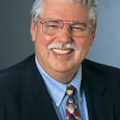MARKET WATCH: Crude price rises in New York market
The front-month crude contract continued climbing, up 0.9% Nov. 1 following an unexpected draw from US inventories, as the recovering transportation network enabled more traders to reach the floors of New York markets.
Trading volumes in the equity market hit a 6-week high as a result, said analysts in the Houston office of Raymond James & Associates Inc. “This morning, crude and natural gas futures are both in red with enthusiasm tempered by a weaker euro and in anticipation of today’s jobs data,” they said.
Meanwhile, anger mounted among impatient East Coast residents over gasoline shortages, power outages, and long waits for relief supplies. Executives from the Department of Homeland Security and the Federal Emergency Management Agency likely will get an earful from storm victims during tours of Staten Island scheduled Nov 2.
Officials estimate 4.5 million homes and businesses in 15 states are still without electricity. Although power is expected to be returned throughout Manhattan by Nov. 3, it may take weeks in many areas before the electrical grid is again working. Forecasts for colder weather in the Midwest and Northeast add to storm victims’ concern.
The Energy Information Administration said Nov. 1 commercial US crude inventories fell 2 million bbl to 373.1 million bbl in the week ended Oct. 26, countering Wall Street’s consensus for a gain of 1.8 million bbl. Crude stocks remain above average for this time of year, however. Gasoline inventories increased 900,000 bbl to 199.5 million bbl in the same period, meeting analysts’ expectations. Both finished gasoline and blending components increased. Distillate fuel stocks dipped by 100,000 bbl to 117.9 million bbl last week, short of the market’s outlook for a loss of 1.4 million bbl (OGJ Online, Nov. 1, 2012).
“Refinery utilization increased slightly to 87.7%, [but] we expect to see a decline in the next report, reflecting the hurricane-related refinery shutdowns this week,” Raymond James analysts said. According to the latest EIA data, US gasoline demand was up 4.1% from the previous week and is up 0.5% from a year ago on a 4-week moving average basis. “Distillate demand was essentially flat,” said Raymond James analysts. “Cushing, Okla., [crude] inventories fell 700,000 bbl to 43.4 million bbl and are currently 11.3 million bbl higher than year-ago levels. With total petroleum demand down 2% week-over-week, total days of supply increased to 46.6 days and are now 0.7 days below year-ago levels.”
Energy prices
The December contract for benchmark US light, sweet crudes gained 85¢ to $87.09/bbl Nov. 1 on the New York Mercantile Exchange. The January contract climbed 84¢ to $87.57/bbl. On the US spot market, West Texas Intermediate at Cushing was up 85¢ to $87.09/bbl.
The new front-month December contract for heating oil declined 2.91¢ to $3.03/gal on NYMEX. Reformulated stock for oxygenate blending for the same month inched up 0.33¢ to 2.63/gal.
The December natural gas contract rose 0.7¢ to $3.70/MMbtu on NYMEX. On the US spot market, gas at Henry Hub, La., increased 1.5¢ to $3.51/MMbtu.
In London, the December IPE contract for North Sea Brent dropped 53¢ to $108.17/bbl. Gas oil for November fell $15.75 to $942.25/tonne.
The average price for the Organization of Petroleum Exporting Countries’ basket of 12 benchmark crudes picked up 10¢ to $106.26/bbl.
Contact Sam Fletcher at [email protected].
About the Author

Sam Fletcher
Senior Writer
I'm third-generation blue-collar oil field worker, born in the great East Texas Field and completed high school in the Permian Basin of West Texas where I spent a couple of summers hustling jugs and loading shot holes on seismic crews. My family was oil field trash back when it was an insult instead of a brag on a bumper sticker. I enlisted in the US Army in 1961-1964 looking for a way out of a life of stoop-labor in the oil patch. I didn't succeed then, but a few years later when they passed a new GI Bill for Vietnam veterans, they backdated it to cover my period of enlistment and finally gave me the means to attend college. I'd wanted a career in journalism since my junior year in high school when I was editor of the school newspaper. I financed my college education with the GI bill, parttime work, and a few scholarships and earned a bachelor's degree and later a master's degree in mass communication at Texas Tech University. I worked some years on Texas daily newspapers and even taught journalism a couple of semesters at a junior college in San Antonio before joining the metropolitan Houston Post in 1973. In 1977 I became the energy reporter for the paper, primarily because I was the only writer who'd ever broke a sweat in sight of an oil rig. I covered the oil patch through its biggest boom in the 1970s, its worst depression in the 1980s, and its subsequent rise from the ashes as the industry reinvented itself yet again. When the Post folded in 1995, I made the switch to oil industry publications. At the start of the new century, I joined the Oil & Gas Journal, long the "Bible" of the oil industry. I've been writing about the oil and gas industry's successes and setbacks for a long time, and I've loved every minute of it.